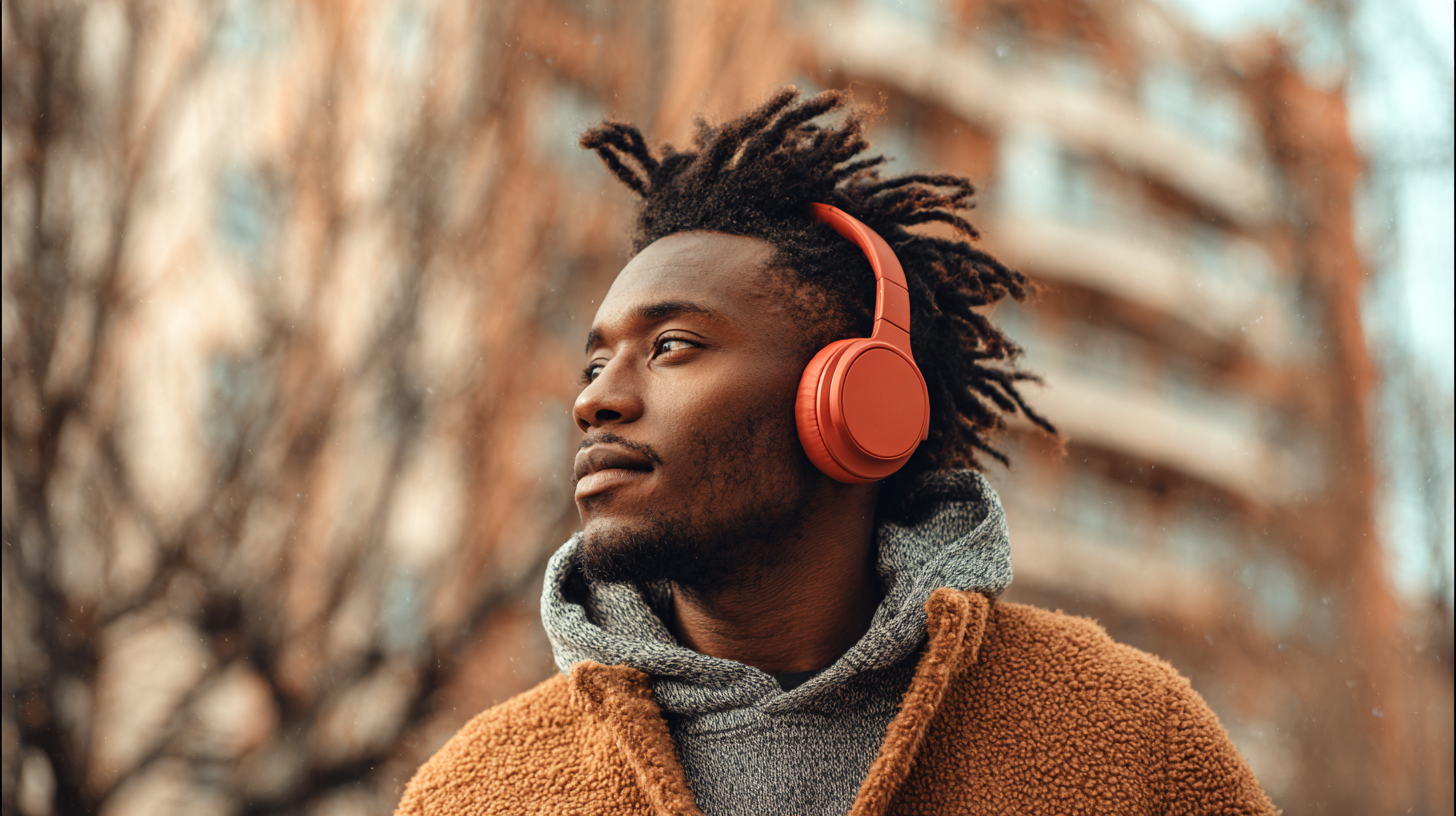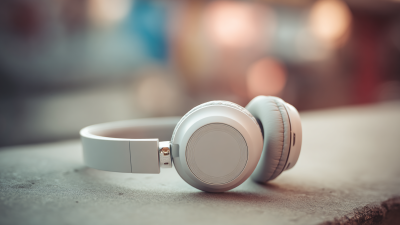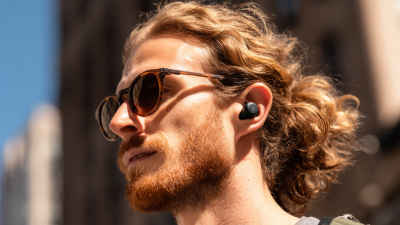Leave Your Message
-
Phone
-
E-mail
-
Whatsapp
In today's rapidly evolving audio technology landscape, the demand for Over Ear Wireless Headphones has surged dramatically, with market research projecting a compound annual growth rate (CAGR) of around 20% from 2021 to 2028. As consumers increasingly prioritize comfort and sound quality, choosing the right pair of headphones has become more critical than ever. According to a recent survey by the Consumer Technology Association, 75% of users consider sound quality the most crucial feature when selecting headphones, closely followed by comfort. This guide aims to navigate the complexities of selecting the best Over Ear Wireless Headphones that meet both ergonomic and auditory requirements, ensuring an optimal listening experience whether for casual use, professional settings, or immersive entertainment.

When choosing the best over-ear wireless headphones, understanding your audio needs is crucial for selecting the right model. Sound quality is often defined by a few key parameters: frequency response, total harmonic distortion (THD), and soundstage. According to a report by the Consumer Technology Association, headphones that offer a frequency response of at least 20 Hz to 20 kHz can reproduce the full spectrum of human hearing, ensuring that you don’t miss out on the subtleties of your favorite tracks.
Tips: Look for headphones with low THD levels, ideally below 1%, as this indicates the sound will be closer to the original recording. Additionally, consider models with aptX or LDAC support for high-resolution audio streaming, enhancing the clarity and detail of your music.
Another important aspect is the soundstage, which refers to the perceived spatial quality of sound. A wider soundstage can make music feel more immersive. Research suggests that headphones with well-designed drivers and enclosures can greatly enhance soundstage perception.
Tips: Try headphones with adjustable sound profiles, allowing you to customize the audio experience. Also, consider models with good passive isolation to block out outside noise, enabling a more focused listening experience.
When selecting over-ear wireless headphones, comfort is paramount, particularly the ear padding and overall weight. According to a study conducted by the Consumer Technology Association, 64% of users prioritize comfort when choosing headphones, and it's easy to see why. Headphones that are too heavy or have inferior padding can lead to discomfort during long listening sessions. A well-padded earcup typically utilizes memory foam or similar materials, which can significantly enhance the listening experience. Research from the International Journal of Industrial Ergonomics shows that proper padding can improve perceived comfort by up to 30% during prolonged usage.
Moreover, the weight of the headphones plays a crucial role in comfort. The average weight of comfortable over-ear headphones typically ranges from 250 to 450 grams. A report by Statista indicated that users often prefer headphones on the lighter end of this spectrum, as they contribute to a less fatigued experience. Brands that meet this criterion not only improve user satisfaction but also foster brand loyalty, with 70% of satisfied users indicating they'd recommend their headphones to others. Therefore, when evaluating potential purchases, ensure to consider both the quality of ear padding and the overall weight for the best auditory experience without compromising comfort.

When selecting over-ear wireless headphones, battery life and connectivity are two crucial features that can significantly enhance the listening experience. A long-lasting battery is essential for uninterrupted enjoyment, especially for users who frequently listen to music or watch movies on the go. Look for headphones that offer at least 20 to 30 hours of playback time on a single charge. Additionally, features like quick-charge technology can be a game changer, allowing you to get several hours of playback from just a short charging session.
Connectivity is another vital aspect to consider. The latest Bluetooth technology, such as Bluetooth 5.0, not only improves sound quality but also extends range and reduces latency. This is particularly important for gamers and movie lovers, as any delay can disrupt the experience. Furthermore, having the option to connect via NFC or having a wired backup ensures additional flexibility, catering to different scenarios and devices. By prioritizing battery life and connectivity, you can choose over-ear wireless headphones that deliver excellent sound quality without the hassle of frequent recharging or connectivity issues.
| Model | Comfort Rating | Sound Quality Rating | Battery Life (Hours) | Connectivity |
|---|---|---|---|---|
| Model A | 9/10 | 8/10 | 30 | Bluetooth 5.0 |
| Model B | 8/10 | 9/10 | 25 | Bluetooth 4.2 |
| Model C | 10/10 | 7/10 | 20 | Bluetooth 5.2 |
| Model D | 8/10 | 8/10 | 15 | Bluetooth 5.0 |
| Model E | 7/10 | 9/10 | 35 | Bluetooth 4.1 |
When it comes to choosing over-ear wireless headphones, brand reputation and sound quality play crucial roles. According to a recent study by Consumer Reports, leading manufacturers such as Sony, Bose, and Sennheiser consistently rank high for their superior audio performance and exceptional comfort. For instance, Sony's WH-1000XM4 headphones have received accolades for their industry-leading noise cancellation technology, which enhances listening experiences by eliminating external distractions. This model not only boasts a frequency response range of 4 Hz to 40 kHz, catering to both bass enthusiasts and audiophiles alike, but it also provides a comfortable fit that supports prolonged use.

Bose, renowned for its consumer electronics, continues to excel with its QuietComfort series. In a survey conducted by TechRadar, 92% of users reported a high level of satisfaction with the comfort and sound isolation offered by these headphones. The QuietComfort 45, for example, features a lightweight design and plush ear cushions, making it an ideal choice for long listening sessions. Sennheiser, on the other hand, appeals to audiophiles with models like the HD 560S, which deliver a detailed and expansive soundstage. Cumulatively, these brands underscore the importance of blending comfort and exceptional sound quality, setting the standard in the competitive landscape of over-ear wireless headphones.
When it comes to choosing the best over-ear wireless headphones, budget considerations play a pivotal role in your decision-making process. With a wide array of options available, it’s essential to identify what features you value most—be it sound quality, battery life, or comfort—while staying within your price range. High-end brands often tout impressive specifications, but there are plenty of mid-range and budget-friendly headphones that can deliver excellent audio experiences without breaking the bank.
To maximize your investment, consider setting a budget that allows you to explore various models and brands. Listening to sound demos, if possible, can aid in assessing the quality each headphone offers. Additionally, pay attention to user reviews regarding durability and comfort, as a top-notch audio experience can be overshadowed by uncomfortable fit or quick wear and tear. Ultimately, balancing your priorities and remaining open to less expensive options may lead you to discover exceptional sound quality that aligns perfectly with your budget.






